Setup time: 3 Min
1. Create Sentry Integration on All Quiet
Create a Sentry integration
- Click on the
Integrations > InboundTab. - Click on
Create New Integration.
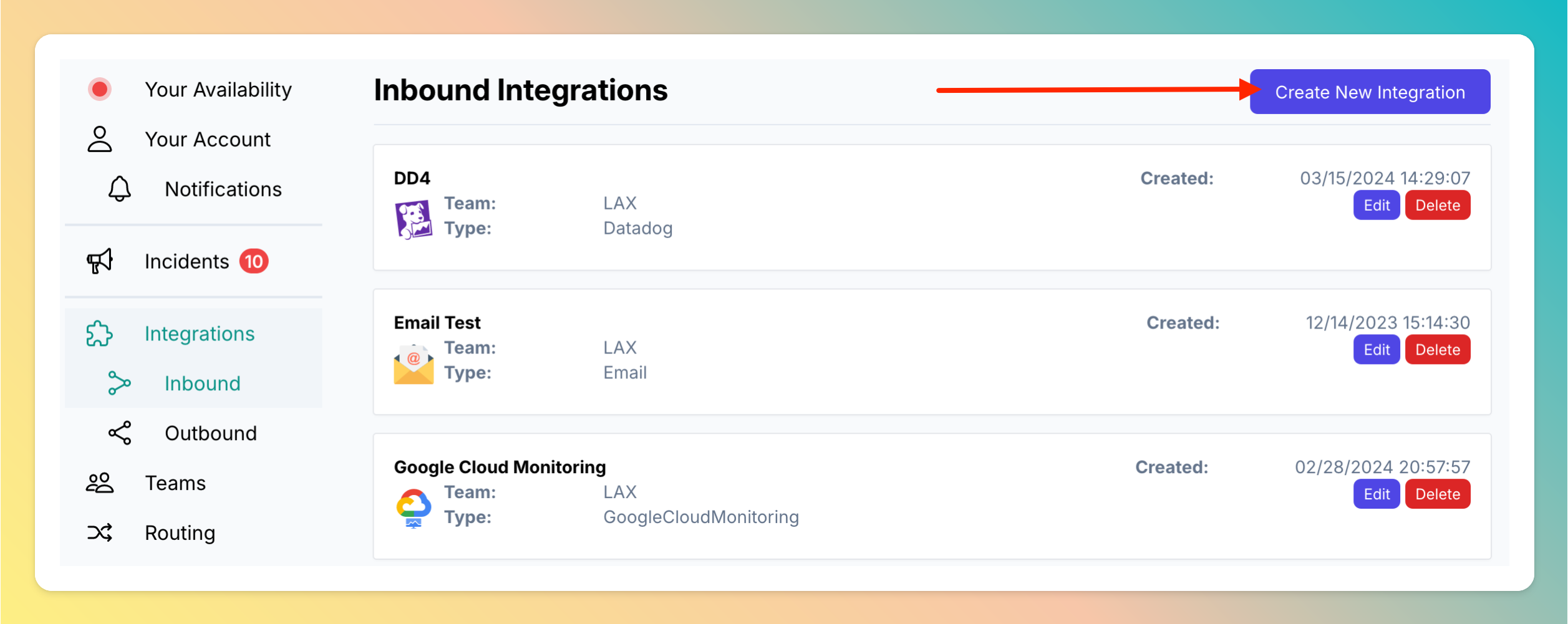
Select Sentry for the integration’s type
- Enter a display name for your Sentry integration, e.g. “Sentry”.
- Pick your team.
- Select
Sentryas the type. - Click
Create integration.
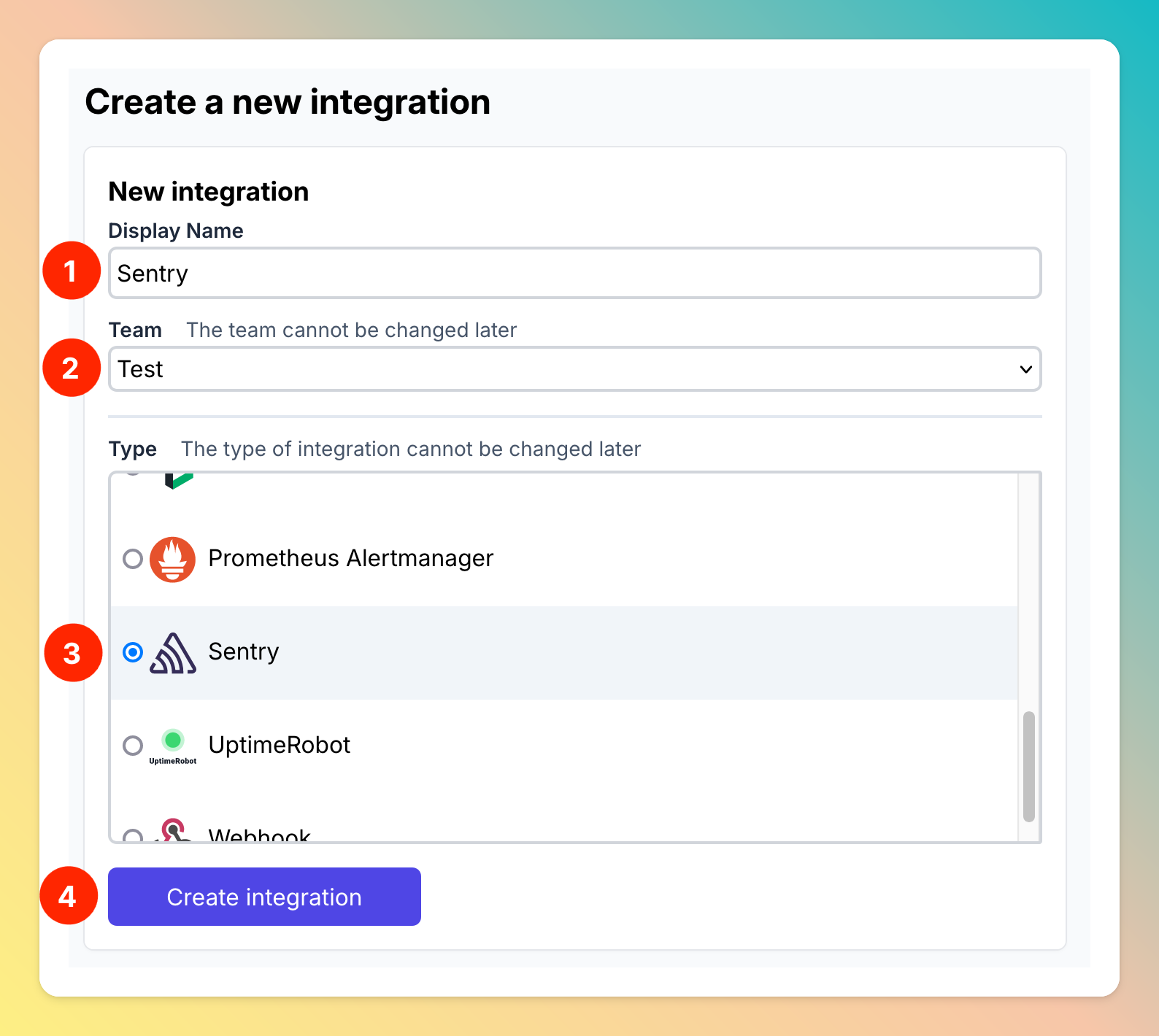
Get the All Quiet webhook URL
After creating the Sentry integration on AllQuiet, you can view and copy the webhook URL. You will require this URL in step 2 when configuring the custom integration on Sentry.
2. Create a custom integration on Sentry
Open your Sentry, click on your Account and navigate toOrganization settings.
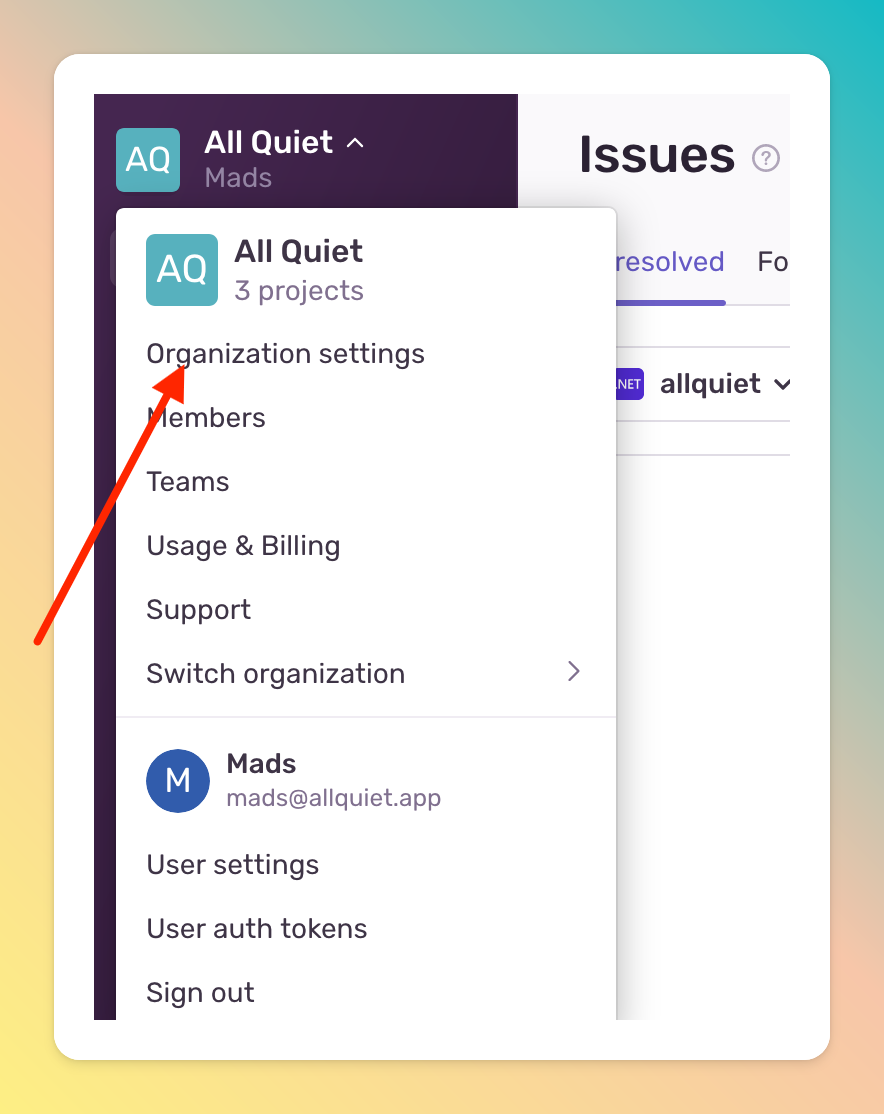
- Navigate to
Developer Settings -> Custom Integrations - Click
Create New Integration.
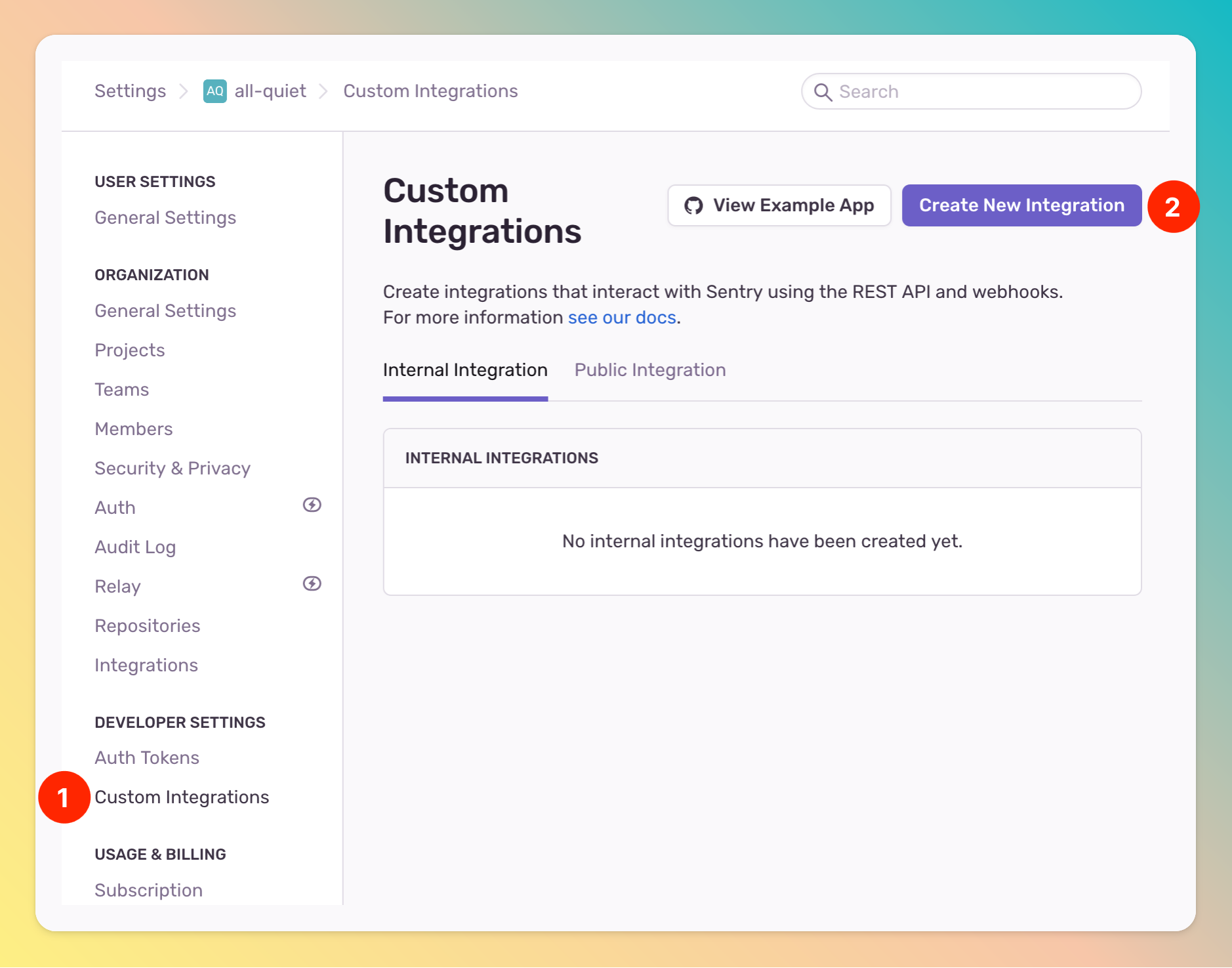
- Choose
Internal Integration - Click
Next
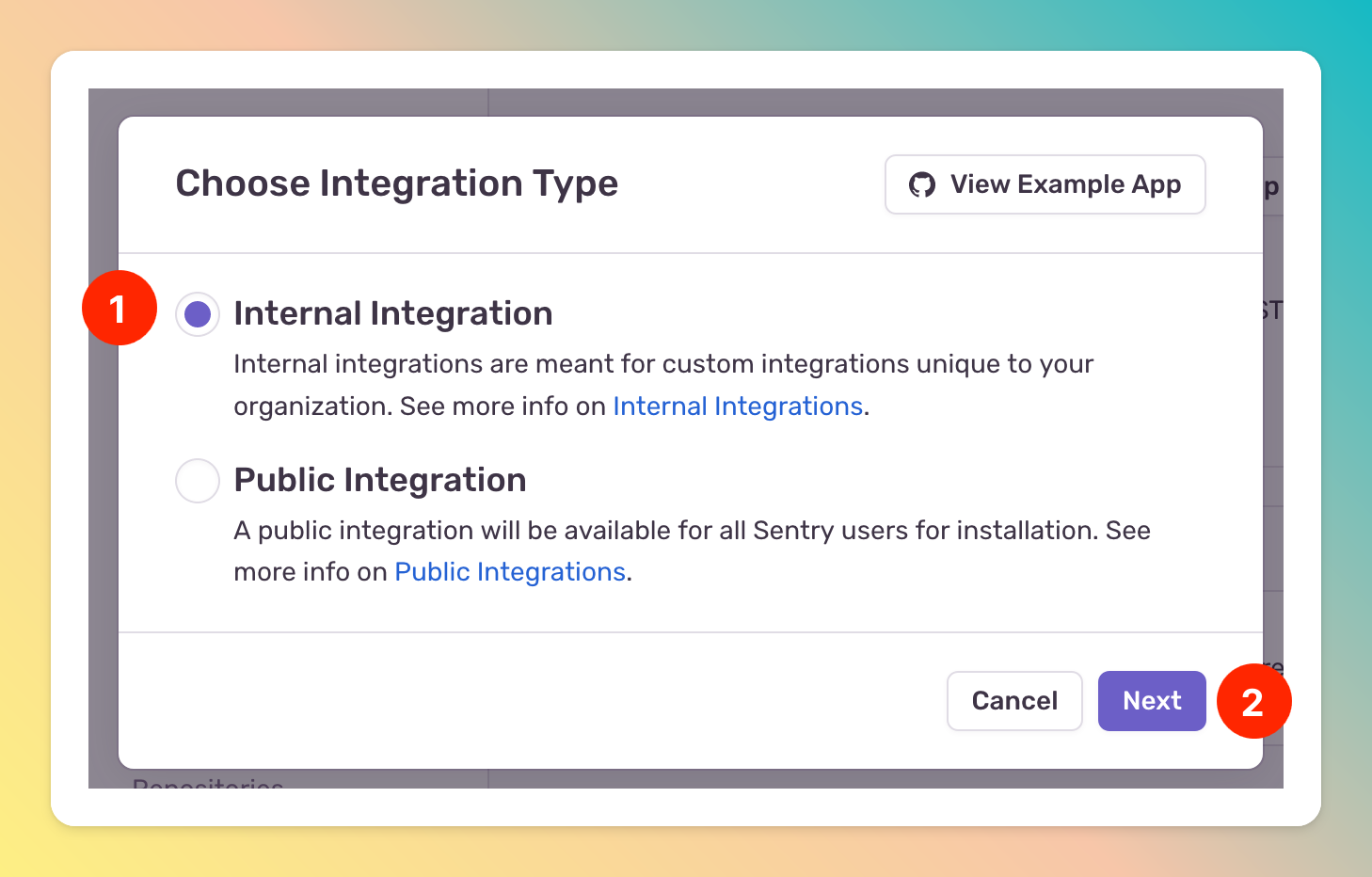
- Enter a name for your integration
- Paste in the All Quiet webhook URL you’ve obtained in step Get The All Quiet Webhook URL.
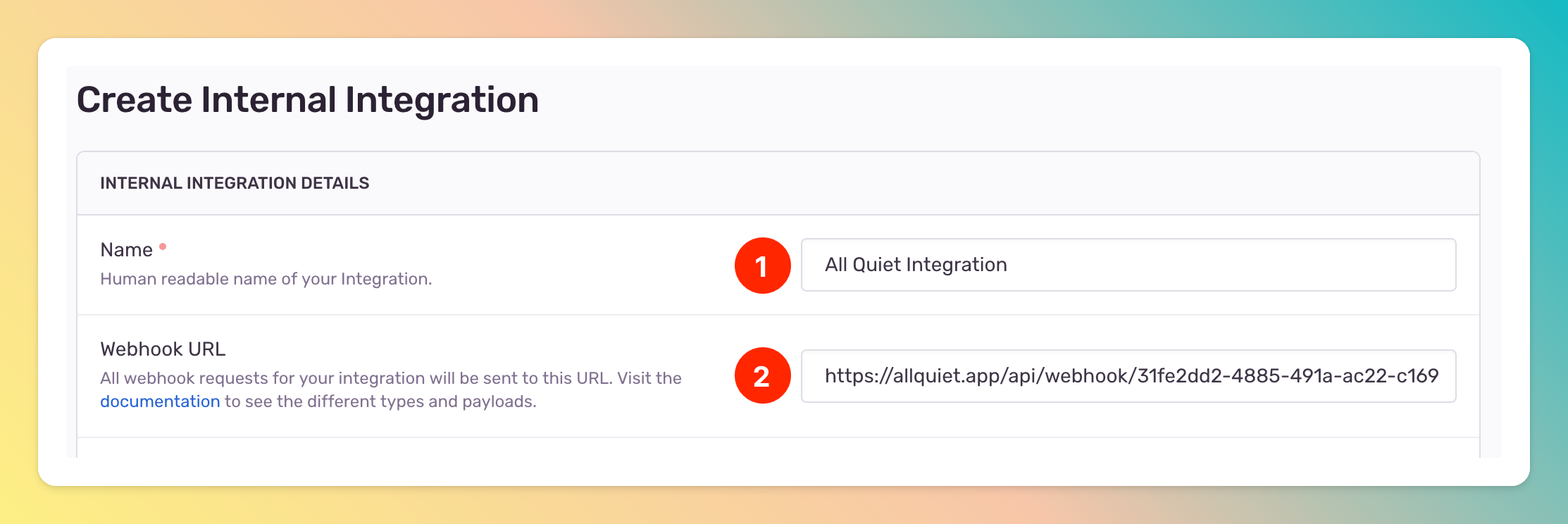
- Select
Readpermissions forIssue & Event - Select
issueforWebhooks - Click
Save Changesto finally create the custom integration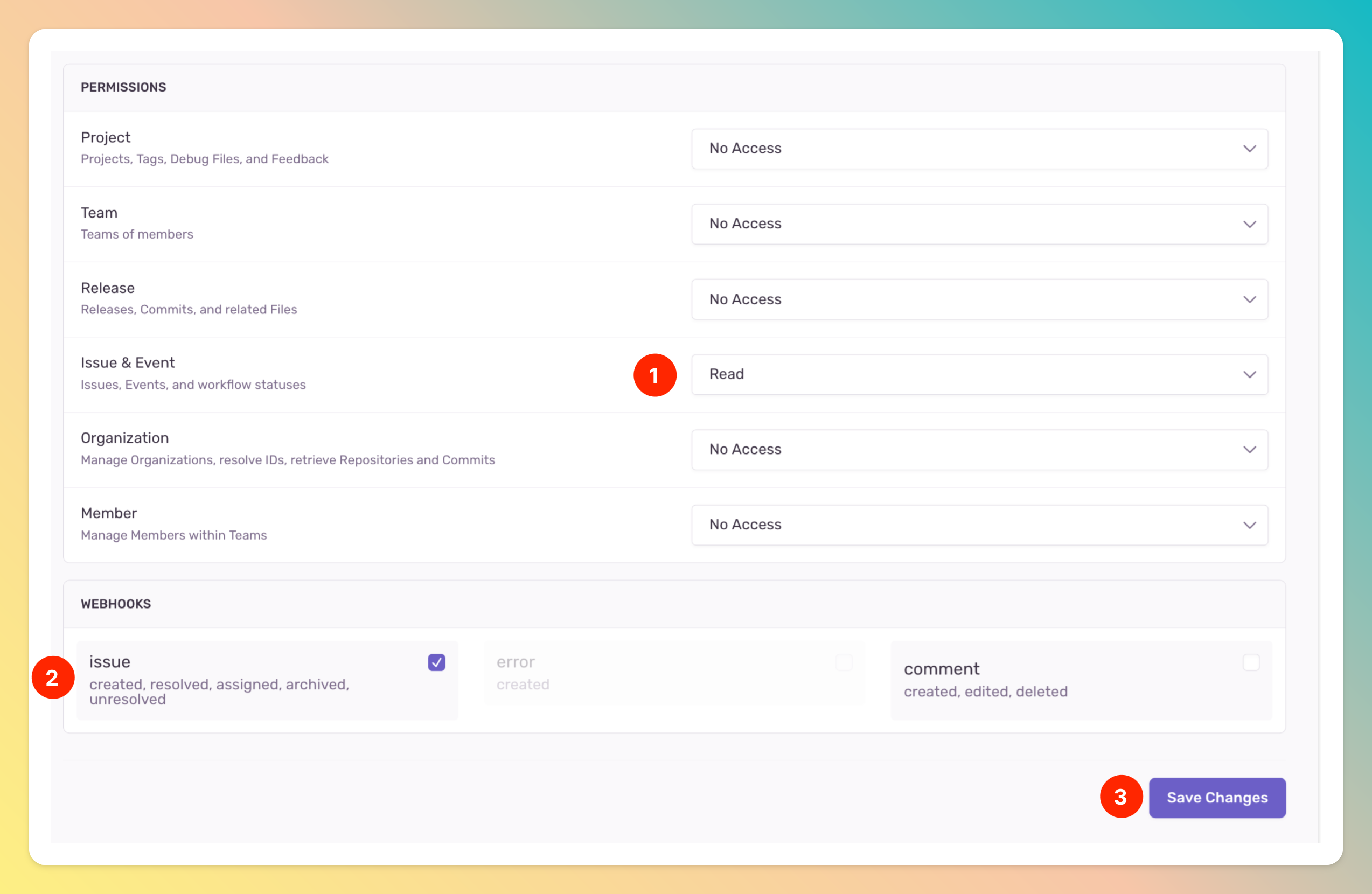
Sentry is now successfully integrated with All Quiet. To test if everythoing works as expected you can interact with any issue in Sentry, e.g. “Resolve” or “Reopen” an existing issue.